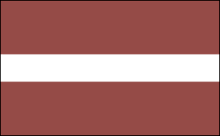NOWE WYDAWNICTWA! TAJEMNICZE MIASTO - TOM 1 ORAZ PRZEWODNIK PORÓWNAWCZY CZ.
2
-
[image:
http://www.cmsklep.eu/michal-szymanski-warszawa-tajemnicze-miasto-stara-warszawa-p-137.html]
[image:
http://www.cmsklep.eu/warszawa-pozostale-d...
niedziela, 1 maja 2011
CZERSK
Wyświetl większą mapę
W XIII w, za czasów księcia Konrada Mazowieckiego była tu siedziba kasztelana. Późniejsze najazdy Litwinów i Rusinów zrównały Czersk z ziemią. Pod koniec wieku miasto stało się siedzibą księstwa Mazowieckiego. Prawa miejskie uzyskuje w 1350 i ponownie w 1386, po odbudowaniu po licznych pożarach. Po przejęciu księstwa Mazowieckiego przez Koronę Polską, królowa Bona Sforza kazała rozbudować zamek. Jednak miasto było nadal pustoszone przez pożary. W 1656 w zniszczonym zamku chronią się wojska Czernieckiego, a Szwedzi pustoszą okolicę, na domiar złego zaraz po nich epidemia wyludnia miasto - ocalało tylko 20 domów. Mimo prób odbudowy, w XVIII w. miasto było kompletnie zrujnowane. Wzrost znaczenia pobliskiej Góry Kalwarii dokończył dzieła. W 1869 władze rosyjskie odebrały Czerskowi prawa miejskie. Dziś pozostał tu tylko duży rynek ze sklepem, ok. 600 mieszkańców i zamek.
In the XIII c., Duke Conrad of Mazovia was established here Castellan. Subsequent raids of the Lithuanians and Russians leveled Czersk to the ground. At the end of the century the city became the seat of the duchy of Mazovia. It obtained city rights in 1350 and again in 1386, after rebuilding after numerous fires. After taking over the duchy of Mazovia by the Polish Crown, Queen Bona Sforza ordered to expand the castle. However, the city was still devastated by the fires. In 1656 Czerniecki hid his troops here and Swedes ravaged the countryside. And to make matters worse the epidemy depopulated city - there were only 20 houses survived. Despite the attempts of reconstruction, in the XVIII century, the town was completely ruined. The growing importance of the nearby Góra Kalwaria finished devastation. In 1869 the Russian authorities took away civic rights for Czersk. Today, there remained only a large market with a shop, about 600 residents and a castle.
Zbrojownia
Ma 16,5 m, na górze były stanowiska straży.
Armory
It has 16.5 m, there were the guard positions at the top.
Wieża Bramna
Ma 20 m wysokości, miała otwór na most zwodzony, a także wąską furtkę dla pieszych. Pierwsza kondygnacja wieży była zapewne pomieszczeniem dla straży, tu także znajdowały się urządzenia do podnoszenia mostu oraz jedno okienko z widokiem na most . W drugiej mieszkał burgrabia, zarządzający zamkiem podczas nieobecności księcia.
Tower Gate
It has 20 m of height, it had a hole for the drawbridge, and the narrow gate for pedestrians. The first floor of the tower was probably a room for guards, and there were devices for raising the bridge and a window to overlook the bridge. In the second floor, the burgrave lived, lock manager in the absence of the prince.
Brama Więzienna
Ma 21,5 m wysokości. Jej fundamenty zostały pogłębione a dno wyłożone kamiennymi płytami. Więźniów prawdopodobnie spuszczano na linach z otworu w podłodze na I piętrze.
Prison Gate
It is 21,5 m high. Its foundations were deepened and the bottom is lined with stone slabs. The prisoners were put down on a rope from the hole on the first floor.
Kościół Przemienienia Pańskiego
Powstał w 1805-6 z cegły po rozbiórce zamku.
Church of the Transfiguration
It was established in 1805-6 with bricks of the ruined castle.
Na cmentarzu znajdują się mogiły powstańców...
In the cemetary there are uprisers' graves...
... a także groby sięgające XIX w.
.. and some graves from the XIX c.
Subskrybuj:
Komentarze do posta (Atom)





































Brak komentarzy:
Prześlij komentarz